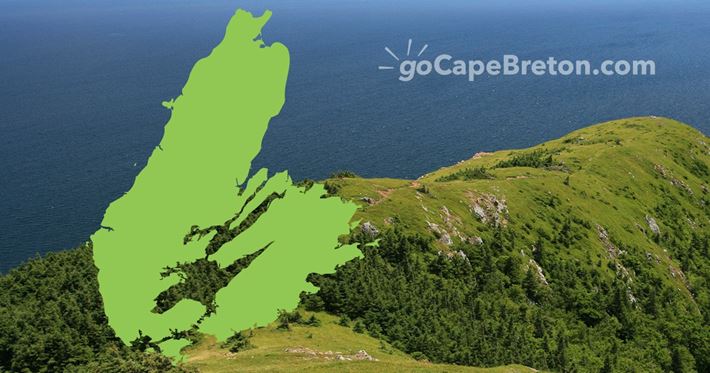Friday Nights Dancing at the Gym
Circles
Terry was twenty that summer, but I never considered his age, or where he was when he wasn’t at one of our shared hangouts. Our crowd was a large, amorphous one, made up of many smaller groups of close friends: some of us joined the crowd at a couple of our Whitney Pier hangouts, some at most of them, none of us at all. Terry, as far as I was concerned, was simply another teen who one day appeared among us, and on some level – the level that matters, it seems now – those outside of one’s closest group of friends existed only when they were physically present.
Nobody could show up at all the crowd’s favoured spots because there wasn’t a single set of places we shared. That set varied depending on who you were and what sub-group you belonged to. Though we gathered on the same street corner and at the same recreation centre, we remained, to an extent I then didn’t realize, a collection of separate groups – yet, in the true Sixties spirit of mysticism and solidarity, members of the subgroups merged with the larger crowd to form one collective identity. It was an identity as real as that of the Holy Trinity, the one our teachers – nuns and devotedly religious spinsters – had explained to the Catholic boys among us during catechism classes at Holy Redeemer Elementary School.
Mother St. Michael*, who had taught my father the same pre-Vatican II Catholic faith during the Depression Era, transgressively lit three matches at the front of the class. Three flames, then one flame, then three again. With more attention than usual, we studied the three matchsticks held between her fingers and the single flame now burning above them. “The Trinity,” Mother St. Michael told us fourth grade students, “acutally has a meaning.” There was some light in our eyes, some interest. “Now that you’re using your brains a bit, the Trinity starts to become a mystery you can intelligently believe in.”
Our teachers had drilled us in the Our Father, the Holy Mary, and the Guardian Angel prayer, and told us Biblical stories that awakened our empathy, but that day Mother St. Michael offered us another world. The matchstick routine was a standard Catholic school presentation, but the impact of our teacher’s words made an impression. Over the years, a new thought might indeed begin to take shape in your mind and eventually – maybe never fully realized, but on that level of the mind which matters – the realization came: If the Trinity could be fully explained, it would be of this world, and not a mystery deserving worship. And then, as Mother St. Michael would have said, you were all right.
Our parochial education gave the attentive pupils at Holy Redeemer a bent for speculative metaphysics. Sociology as practiced by my sophisticated Ashby friend, who studied the pecking order of our crowd with such keen interest on her excursions to Whitney Pier, seemed trivial in comparison. My philosophical head was in the clouds, and my religious education helped prepare me for the times. I was an aspirant member of the Sixties counterculture, one of the spiritual searchers, a morally sensitive rebel, and, if only vicariously, a volunteer of America, like the revolutionaries in the Jefferson Airplane song "Volunteers" from the Woodstock album released that spring.
Details grow hazy
The centre of our world, the material grounding of our individual groups’ collective identity, covered only three blocks. The first block was on Victoria Road, between Matilda Street and James Street, with its three staple neighbourhood institutions, cosily situated like an illustration from the weekend colour comic strips. Carluke’s, a shoemaker where we got our skates sharpened, sat between a convenience store, Don’s Dairy, run by Ma, Don’s widow, and the Post Office, where we sat out front on the low single-rail fence, watching the cars go by as we chatted and smoked the illegal cigarettes we bought “loose,” two for a nickel, from Ma. The other two blocks made up the route along James Street to Holy Redeemer Parish Centre, where we played floor hockey and basketball and occasionally bowled a few strings in the basement alleys. It was there we attended the Friday night dance at the Gym, called, for the sophisticated Sixties’ sound of it, the Coffeehouse. Tables were formed in a circle around the basketball court, some strobe lights flashed, and Soul Sonny or Psychedelic Duck played records.
My closest friends that summer were Pat, Bob, and Roy. We were not sophisticated and, even by neighbourhood standards, not living in the fast lane. We listened to records in Roy’s room in his family’s basement, smoking hash occasionally, but we mostly preferred listening with a clear head to the new albums from The Doors, Cream, and Bob Dylan. Often on those summer afternoons, we would go to Pat’s house, where we talked in the living-room over cups of tea and the homemade cookies and biscuits that Jenny, his grandmother, served us, nature’s little kings. We greatly enjoyed those afternoon refreshments, declaring them top notch, but I don’t remember ever being grateful enough to his grandmother – or to any of the adults who were good to us back then.
It was fun to smoke hash on occasion, and sometimes we’d drink a couple of bottles of beer behind Carluke’s before going to the dance. But like most Whitney Pier youth before high school, my friends and I didn’t hang out at any of the youth spots over town, sticking closely to home, even to our Parish area in the Pier. I was never in the Casino – thank God, come to think of it – a pool hall on Charlotte Street, where people went to buy drugs. Drugs for us then meant cannabis and LSD, though I’ve learned from recent interviews that a couple of others were available at the Casino – speed for one, but not hard drugs like cocaine or heroin, the sight of which would have terrified most of our circle.
On a Friday night, the previous fall, after about a dozen of us threw a couple of dollars each into the kitty to cover costs, Terry did the drug run to the Casino, and before going to the dance, many of us took LSD for the first time. The acid was on blotter paper, and we shared the hit, a half blotter each. The directive to share had worked its way down from above; I assumed from older and more experienced peers, perhaps directly from Terry. It turned out to be a responsible decree; as it was, I got alarmingly high. I don’t know of anyone who, strictly speaking, ever hallucinated on an acid trip, but under the psychedelic barrage at the Coffehouse that night, I came pretty close to seeing what wasn’t there.
Half an hour after dropping the blotter, feeling maybe some slight tingling sensations, I began wondering if anything was really going to happen, when a girl’s necklace gleamed and sparkling golden light enveloped me. I began laughing, as reality changed, soon becoming all flashing lights and objects bending and shifting, everything happening all at once. At some point, I slouched over a side staircase leading up to the stage, unable to stand. Almost immediately the drug began to relent, though dwindling slowly, keeping me awake until daybreak. It was an experience, but not one I intended to soon repeat. I had heard of acid heads, but I could hardly believe anyone would subject themselves regularly to such manic experiences. My only conclusion from my trip was that frequent use of LSD would take an unforgiving toll on the psyche, and I assumed these incorrigible acidheads must exist in other places, the ones bordering on fiction you only heard about second-hand or saw in the news, like Rochdale College in Toronto or famous Haight-Ashbury.
A couple of people from Terry’s circle, I’ve recently learned, were dropping acid fairly often back then, but not at Terry’s place. I didn’t know then about Terry’s recreation room, where friends visited and listened to music, but a couple of members of our old circle now tell me they were regulars there, and others visited once or twice. They smoked weed there and block hash, the latter a mild drug and Terry’s favourite, as it was mine. I believe it was someone from Terry’s set who introduced our circle to hash, though we would have eventually found our own way there.
For the most part, when members of our larger crowd didn’t mix with one another, it wasn’t clique behaviour or born from any sense of exclusivity. We didn’t know everything about each other, and we wouldn’t have known why we should have. Without inviting the world along, our group went where we went, whether to Roy’s basement or Pat’s living room or my bungalow in Red Islands, and we didn’t expect others to behave differently. In a natural fashion, we thought of ourselves as both together and apart, and the way we mixed, the harmony within us and between us, simply reflected the music of the spheres restored to both the old secular universe and the fallen cosmos of our parents. The Camelot era, named after the 1960 Broadway musical, the first great cultural hit of our parents’ Sixties, hadn’t worked out for them. For us, for two brief shining summers, in at least one neighbourhood in the world, life seemed to be and mostly was the great countercultural promise realized.
Kenny occasionally visited the Pier during the week, but usually he came on Friday evenings for the Coffeehouse. I didn’t know what brought him from Sydney River to our world: at some point over the previous winter he was just there, playing basketball at the Gym or having a smoke in front of Ma’s. I took his presence among us as just another natural occurrence, like the rainbow clouds or clouds of ore dust that sometimes floated above us. Our reactions, or lack of them, as mostly 15- to 17-year-old adolescents were often more instinctual than reflective.
Though we shared a name and were the same age, I never had a real conversation with Kenny. There was some jealousy on my part; perhaps I – instinctively, no doubt – resented the alien presence of this cool, lively guy, newly arrived from Sydney River. Kenny was always smiling, always on the move. It was fun for us boys to show off and get attention from the girls, and he seemed unfair competition from foreign territory. I think if Kenny had started a conversation with me, I would have joined in, perhaps even been eager to bond with the cool new kid, but neither of us ever said anything to the other beyond a few passing words.
I was probably a bit intimidated by him as well as jealous. For me, literally living around the block from all my regular hangouts, Kenny seemed quite an adventurer; the six or seven mile trip from Sydney River to the Pier was a daunting distance for a fifteen-year-old to travel from home – and, not that I realized this at the time, to visit the then socially stigmatized Whitney Pier, with its unprized cultural mosaic, its ruffians and steel plant pollution. Kenny was adventurous and knew his way around, and he clearly lived in a world larger than mine.
Before Kenny arrived, I didn’t know anyone from Sydney River; it was the place with the Woolco department store – the chain’s founding, in 1962, was another cultural event of my parents’ Sixties – and it was where my father sometimes dropped me off at the entrance ramp of Route 4 to hitch-hike to our summer bungalow in Red Islands. I didn’t know the connection that brought Kenny into our circle was Terry, or that our little world was just one stop on Kenny’s and Terry’s rounds of Sydney dance halls. I never even learned the two were close friends till after their deaths.
One of my very few memories of Kenny is seeing him talking on the pay phone mounted on the wall at Don’s Dairy, not quite still even then, shifting his weight from side to side, but without any awkwardness, moving naturally as always. He was speaking to his mother, arranging a pick-up time for his drive back to Sydney River at the end of that evening. That is how I remember it: after hanging up the phone, Kenny asked me for a cigarette and told me he had been arranging the drive – but memories might be conflating here. I remember Kenny a couple of times asking me for a cigarette: cigarettes were cheap and friends were always asking one another if they had a smoke. But I’m sure he was speaking to his mother, so maybe we chatted a bit more than I can now recall.
Pat had a more lucid recollection of Kenny to share. One evening, Pat had arrived early to the dance with the rest of us to set up the tables and chairs in return for not paying the sixty-cents admission at the door. After setting up, we were waiting around for the Coffeehouse to start and Soul Sonny was on stage getting ready to play records. “I remember Terry was sitting by himself on the edge of the stage, having a smoke. People were just starting to drift in. Soul Sonny put on a song, “Mississippi Queen,” the song that opens with cowbells, like a drum beat. Kenny jumped up on the stage and started dancing. Terry looked up at Kenny and burst out laughing. That’s the last time I remember seeing Terry. It’s a good memory – Terry laughing with his friend and Kenny dancing.”
Kenny was lively, always smiling, always on the go, burning up a lot of energy. The last night of his life, on the drive in Roydon Hunt’s car to the train tracks, Kenny was the one who tried to sleep. His older brother, Duke Novak, who perhaps heard it first-hand from Roydon, told me that Kenny, before putting his head against his knapsack, had said, “I want to go home.” Perhaps Kenny said this; he did try to nap in the car for a few minutes. Kenny, full of energy and life, now exhausted, must have wished that night to be sleeping in his own bed at home.
Why We Did Nothing
As we began arriving at the dance that night, only one of us knew the police had been at Terry’s home that afternoon. Some of the crowd were aware that Terry and Kenny had been camping in Ingonish, and they believed the two were back in town by now and would most likely be at the dance. Terry had promised Rose she’d be his date that night, and she was looking out for him. Not the rest of us: we didn’t keep track of one another, and normally we wouldn’t notice the absence of Terry and Kenny at a dance.
Alan, who had remained for a few days in Ingonish after his friends had left for the States, was back in Sydney by Friday; although he now can’t recall if he was at the dance, he probably stayed away. For one thing, it is likely that the police had spoken to Alan earlier that day about the trio’s departure from Ingonish and whatever travel plans they might have had, so he would have been able to tell us the police story about Terry and Kenny being killed in a train accident. But even if Alan hadn’t yet known about the deaths, he knew that Terry and Kenny, along with David Burroughs, had left Ingonish for the States, which would have lent credence to the rumour of the deaths circulating at the dance that night. But apart from Pat, everyone I spoke to remembers leaving the dance convinced that Terry and Kenny were still alive. “I didn’t think for one moment they were dead,” they would say. So Alan must have stayed away from the dance that night, as was to be expected if he had learned that afternoon of his friends’ deaths.
Alan, however, had a girlfriend, Cookie, who was at the dance, and she was the one who had heard the news about the deaths, maybe from Alan. Cookie, like Alan, can’t remember anything from that night, so her source remains uncertain. Pat’s guess is that Cookie heard the story from the two uniformed cops hired for security, who always stood by the entrance door in the side porch, sometimes chatting with the girls.
Pat, Roy, and I were in the front lobby of the Parish Centre, waiting for the dance to start, when Cookie walked directly up to us and, using his nickname, burst out, “Berts is dead.” I can imagine the looks that greeted her. She added, more insistently, “Terry and Kenny were in the States, and they were run over by a train.” I’m ashamed to admit I dismissed her statement with a laugh: things like that don’t happen in our world. We might have been the last people Cookie tried to tell the story to at the dance that night. Pat soon saw Cookie run out the lobby doors on the verge of tears, and run down James Street. Maybe she wanted to cry alone because no one believed her, maybe she ran to Alan’s house.
Pat had also noted a panicked look on Cookie’s face when she announced the deaths, suggesting she had just heard the news and it was from a reliable source, which is why he believes it was from the cops on the door. And he recalls taking her words seriously. Everyone else quickly dismissed the story: Run over by a train, in the United States? It sounded like a game of telephone grown into a macabre tale. I can’t recall any of the evening after the dance began, but as things got under way, I did have a strange feeling of unease. What if the story were true? After all, Terry and Kenny, who were usually early to the dance, were still absent and no one seemed to know what was up with them. Once, something was said about them maybe staying on at the campgrounds, but that didn’t sound convincing to me. Perhaps I then recalled that alarmed look on Cookie’s face.
My last memory of the night is a dreamlike one of looking down at a crowded table, where extra chairs had been brought over and some friends had gathered around in a large, irregular circle, happily settling in for the dance. I was asking, “What if the story is true?” I can’t remember one individual face. My question was met with silence, a couple quick headshakes, one sharp No, and looks of distaste. Of course Terry and Kenny are alive. Insisting on just the possibility, I said something else, I don’t remember what. Someone said something about how idle rumours got started, rumours that caused harm. Why am I asking ghoulish questions? The collective spirit of the group had spoken. Really, it couldn’t be true that Terry and Kenny were killed by a train in the United States. And there was nothing we could do about it if they were.
But after the dance was over and we had arrived home, lying in bed before sleep, were we all so certain that our friends were still alive? Did we completely discount the possibility that they had been killed somewhere in the States, and that when we woke in the morning we would learn that Terry and Kenny were dead? If they were, we would read about their deaths in the morning, in Saturday’s newspaper. And if the news had arrived too late for the Cape Breton Post to cover, we would hear it through the grapevine on Victoria Road; everyone would be talking about the deaths of Terry and Kenny on Saturday. I don’t recall what I thought before sleeping; it would later seem to me those must have been my thoughts. The last thing I remember from that night is standing before that crowded table at the Coffeehouse, with a sense of unease and anxiety that I didn’t understand at all.
After we learned on Saturday morning that Terry and Kenny had been killed, and after those deaths were so quickly put behind us, the thought, never fully voiced, began to form that I had been in bad faith when I denied the possibility of Terry and Kenny’s deaths. Maybe at the dance, I just pushed the rumour out of my mind, so the bad news wouldn’t interrupt my fun. I couldn’t have cared much at all then. Perhaps, this obscure line of thought persisted, as if unraveling another mystery, I wanted the story to be true, because if Terry and Kenny were run over by a train there would be news and excitement. Perhaps all those motives were behind my denial of their deaths that evening. It was as bad as if I had wanted them dead. You were young, and the young are self-absorbed, and besides you didn’t know Terry and Kenny, not really. Who can say for sure what we truly think?
The guilt started from the very beginning, when I’d begun to entertain evil possibilities: Friday night, that they were dead; the next morning, when I rushed off after breakfast, eagerly heading for Victoria Road to hear what others were thinking after reading the news of their deaths, rushing to learn the real story. Through subterranean channels, obscure thoughts and feelings began working according to their own rules, ones which, as the culture nformed us back then, only Freud understood and the Shadow knew, and so, like thoughts of your own death, were to be pushed away by healthy-minded, normal people. Forget about it. Others must have felt guilty, too, though no one yet could have been aware of what was taking shape within us. There must have been some reason why we did nothing. Whole lifetimes of doing nothing.
We felt guilty, so we were guilty. Guilt makes it easier to shut you up, makes you uncertain. Otherwise, we would have done something to find the truth. We would have thought and acted. We would have done something. The Sixties knew that guilt was the primary emotion they used to control you: it was this knowledge, after all, that gave guilt a bad name.





0
Log In or Sign Up to add a comment.- 1
arrow-eseek-eNo items to display